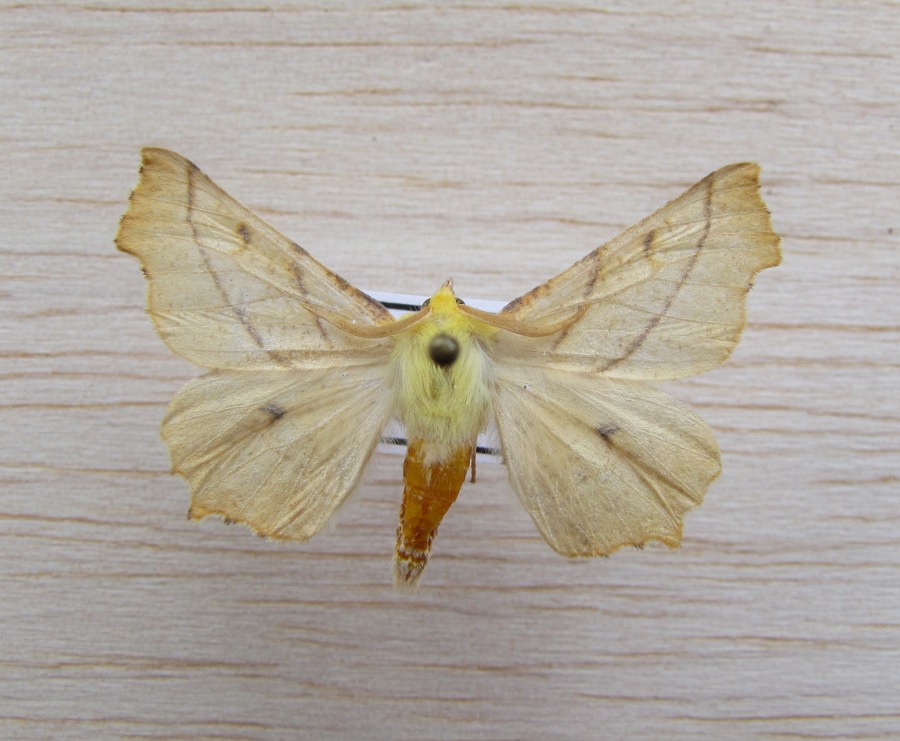Ennomos Alniaria on:
[Wikipedia]
[Google]
[Amazon]
''Ennomos alniaria'', the canary-shouldered thorn, is a 
pdf
/ref> Other '' Ennomos'' species are similar.
Canary-shouldered thorn on ''UKMoths''''Lepiforum e.V.''''De Vlinderstichting''
Ennomini Moths described in 1758 Moths of Europe Taxa named by Carl Linnaeus {{Ennominae-stub
moth
Moths are a paraphyletic group of insects that includes all members of the order Lepidoptera that are not butterflies, with moths making up the vast majority of the order. There are thought to be approximately 160,000 species of moth, many of w ...
of the family Geometridae. The species was first described by Carl Linnaeus
Carl Linnaeus (; 23 May 1707 – 10 January 1778), also known after his ennoblement in 1761 as Carl von Linné Blunt (2004), p. 171. (), was a Swedish botanist, zoologist, taxonomist, and physician who formalised binomial nomenclature, the ...
in his 1758 10th edition of ''Systema Naturae''. It can be found in Europe in a wide variety of biotopes where there are deciduous trees, perhaps mostly in deciduous forests and gardens.
Description
Thewingspan
The wingspan (or just span) of a bird or an airplane is the distance from one wingtip to the other wingtip. For example, the Boeing 777–200 has a wingspan of , and a wandering albatross (''Diomedea exulans'') caught in 1965 had a wingspan of ...
is 34–42 mm. The length of the forewings is 16–20 mm. Resembles ''Ennomos quercinaria
''Ennomos quercinaria'', the August thorn, is a moth of the family Geometridae. The species can be found in Europe. It was first described by Johann Siegfried Hufnagel in 1767.
Description
The wingspan is 42–50 mm. The length of the fo ...
'', but has a canary-yellow thorax. The forewings are scalloped and there are also two cross lines. The wings are ochre yellow with greyish flecks. The bands, a small discal spot on the forewing and a larger discal spot on the hindwing are grey. The larva is brownish-grey, long and thin, with four raised cross-bands on the dorsal side. It closely resembles a dead twig.Prout, L. B. (1912–16). Geometridae. In A. Seitz (ed.) ''The Macrolepidoptera of the World''. The Palaearctic Geometridae, 4. 479 pp. Alfred Kernen, Stuttgar/ref> Other '' Ennomos'' species are similar.
Distribution
Caucasus
The Caucasus () or Caucasia (), is a region between the Black Sea and the Caspian Sea, mainly comprising Armenia, Azerbaijan, Georgia, and parts of Southern Russia. The Caucasus Mountains, including the Greater Caucasus range, have historically ...
and Russia
Russia (, , ), or the Russian Federation, is a List of transcontinental countries, transcontinental country spanning Eastern Europe and North Asia, Northern Asia. It is the List of countries and dependencies by area, largest country in the ...
to western Europe. The northern limit is Fennoscandia
__NOTOC__
Fennoscandia (Finnish language, Finnish, Swedish language, Swedish and no, Fennoskandia, nocat=1; russian: Фенноскандия, Fennoskandiya) or the Fennoscandian Peninsula is the geographical peninsula in Europe, which includes ...
and the southern limit is the northern Mediterranean
The Mediterranean Sea is a sea connected to the Atlantic Ocean, surrounded by the Mediterranean Basin and almost completely enclosed by land: on the north by Western and Southern Europe and Anatolia, on the south by North Africa, and on the e ...
.
Biology
The moths fly in one generation from July to October. They are attracted to light. The larvae feed on a number of deciduous trees including downy birch andsilver birch
''Betula pendula'', commonly known as silver birch, warty birch, European white birch, or East Asian white birch, is a species of tree in the family Betulaceae, native to Europe and parts of Asia, though in southern Europe, it is only found a ...
, alder and goat willow.
References
Notes
#''The flight season refers to theBritish Isles
The British Isles are a group of islands in the North Atlantic Ocean off the north-western coast of continental Europe, consisting of the islands of Great Britain, Ireland, the Isle of Man, the Inner and Outer Hebrides, the Northern Isles, ...
. This may vary in other parts of the range.''
External links
Canary-shouldered thorn on ''UKMoths''
Ennomini Moths described in 1758 Moths of Europe Taxa named by Carl Linnaeus {{Ennominae-stub